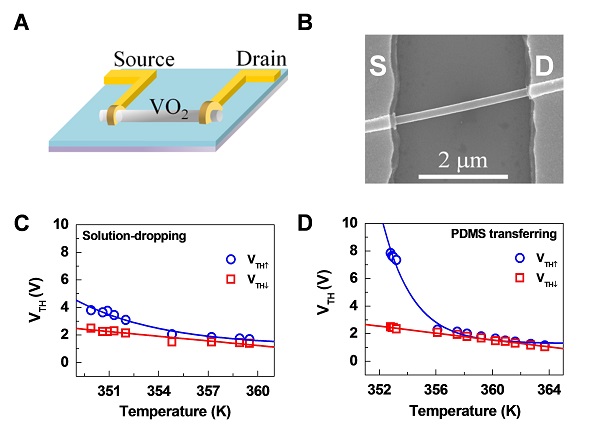Media Center
A multimedia mosaic of moments at GIST
GIST Excellence
[Press Release] Prof. Bong-Joong Kim’s team has identified energy relationships for controlling metal-insulator phase transition
- 엘리스 리
- REG_DATE : 2015.06.26
- HIT : 720
Energy relationship identified for controlling metal-insulator phase transition


(Left) Professor Bong-Joong Kim and Ph.D candidate Min-Woo Kim
Korean researchers have succeeded in identifying the relationship between the stress-heat-electric interactions by three kinds of energy effects of the single-crystal vanadium dioxide (VO2) metal-insulator transition of nanobeams. This discovery is expected to reduce energy loss by controlling variable energies of state-of-the-art devices, such as high-speed switching, memory devices, and others.
* Metal–insulator transition are transitions from a metal (material with good electrical conductivity of electric charges) to an insulator (material where conductivity of charges is quickly suppressed).
GIST Professor Bong-Joong Kim of the School of Materials Science and Engineering and Dr. Woong-Gi Hong of the Korea Basic Science Institute led the research and Ph.D candidate Min-Woo Kim of the School of Materials Science and Engineering performed the experiments. This research results were published in the online edition of Scientific Reports on June 4, 2015.

(A) A schematic diagram and (B) a SEM image of the two-terminal devices fabricated using VO2 nanobeams. (C) Temperature dependence of threshold voltage (VTH) for the two-terminal VO2 nanobeam device fabricated using a solution-dropping method. (D) The corresponding plots for the PDMS-transferred nanobeam device are displayed; the blue data and fits are for the up-sweep from low to high bias voltages, and the red data and fits are for the down-sweep from high to low bias voltages.
Stable thermal and electrical energy were applied to the nanocrystal that was subjected to different stresses, and the research found that voltage was much sensitive to temperature under a large stress in achieving a phase transition.
Professor Bong-Joong Kim said, “Our research will provide helpful information on manipulating the properties of the VO2 nanobeams by altering temperature and voltage with a properly engineered strain. We expect our research to be actively used with future devices that use metal-insulator transition, such as next generation memory, displays, sensors, switching devices, and new functional devices.”